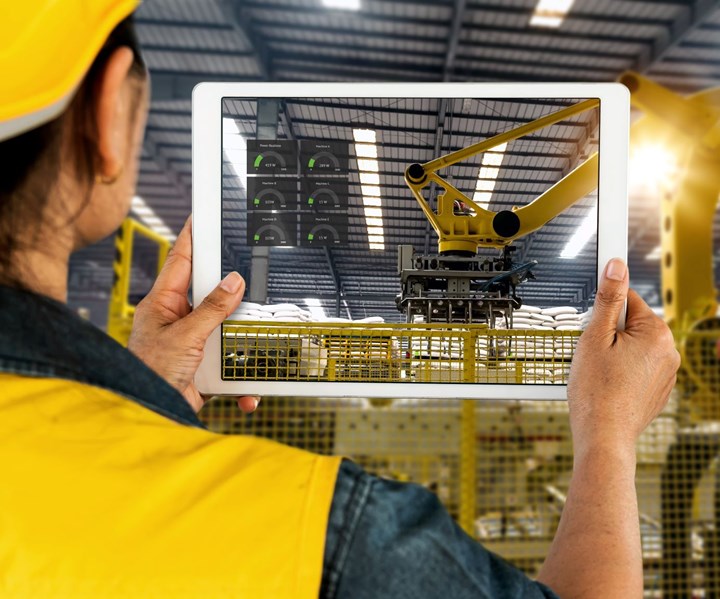The Supply Chain Needs More Technology and Market to Meet Demand in Mexico
The investments that Mexico has received in recent years, especially for the automotive and aerospace industries, have caused production to grow and new OEMs established in the country to look for local suppliers to supply their manufacturing needs.

According to TMF Group’s report, “Back to Growth: How Businesses Plan to Recover after The Pandemic”, despite the widespread health and business challenges caused by the COVID-19 pandemic, two-thirds of U.S. business leaders are optimistic that the U.S. economy will fully recover next year.
Despite the uncertainty, about one third of respondents said they plan to accelerate domestic or international trade expansion as they seek opportunities to grow their businesses during the pandemic. The main countries for international business expansion are Canada, the United Kingdom and Mexico, a sign of confidence after the approval of the USMCA last July.
In the case of the North American region, the report notes that the three North American economies are highly interconnected in regional supply chains, and the USMCA gives them the security to make investments. The document adds that Mexico and Canada were the two largest U.S. trading partners in the last year, according to the U.S. Census Bureau.
On the other hand, Rene Mendoza, National Coordinator of the Industry Supply Chain in Mexico (CAPIM) addressed the issue of how to take advantage of the new trade agreement (USMCA) between Mexico, United States and Canada.
“In 2019, Mexico, the United States and Canada imported inputs from the automotive industry of the so-called third countries—mainly China, Japan, Germany and Korea—for about $52 billion, that means 40% of what was allowed under NAFTA rules, which were those in force,” said Mendoza.
He added that, in the next few years, that 40% will become 25%: “that 15% of new purchases will have to be replaced by products or production processes manufactured in Mexico, Canada and the United States. The value of the business will be $23 billion. These are the new purchases that will have to be made in North America. That is the size of the pie.”
He said that these purchases not only have to be made in Mexico, but in all three countries. “Obviously, big companies buy these products in China and Korea by cost, not necessarily by quality, and in terms of economy of scale, Mexico is the low-cost country in the region and it’s going to have more opportunities.
Aerospace industry
The Mexican Federation of the Aerospace Industry (FEMIA) is developing the Program for the Development of Aerospace Industry Value Chains in Mexico, which includes
- Business Opportunities: More than $700 million in purchasing requirements in 17 manufacturing categories
- Commercial and Technical Recruitment: 8 commercial and 12 technical recruitment factors, including strategies, tactics and tools to be commercially and technically approved by buyers
- Costing and Quotation: Strategies for determining competitive costing models and quote templates
According to Felipe Sandoval, president of FEMIA and general manager of Safran Chihuahua, the methodology they are offering is based on an evaluation process by industry experts, in which a specific and detailed diagnosis of the company's conditions is developed so that it can compete in this sector.
“We help the company understand what transformation it needs to make in its company to be able to successfully integrate into the sector,” said the executive.
Sandoval says that in the last two years they have worked on integrating an entire inventory of industrial capacities in the country. “And today we are able to offer knowledge and thus be able to guide the companies, accompany them and provide them with support and advice so that they can integrate this sector successfully. We are committed to help and accompany all companies that really have the will to integrate into the aerospace sector.”
Also, the Mexican aerospace industry cites 10 applications for which suppliers are required, including aircraft interiors; turbines, engines and propellers; fuel, water and waste systems; landing gear; aerostructures; electrical systems and sensors; avionics and communication systems; evacuation and security systems; ground support; maintenance, repair and overhaul.
Similarly, manufacturing capabilities sought in Mexico include forging, casting, high precision machining, sheet metal, plastic injection, carbon fiber and glass composites, textiles and leather, electrical and electronic components, additive manufacturing, and assemblies and subassemblies.
Complementary capabilities sought by the aerospace industry in Mexico include finishing (coating, painting and heat treatment), welding, tooling (molds and dies), metrology, non-destructive testing, engineering and design, and machinery and equipment (installation, training and maintenance).
According to Felipe Sandoval, Mexico currently imports $6.6 billion in components: “FEMIA has made an inventory of industrial capacities in the last two years, visiting more than 800 companies and profiling the country’s capacities, based on that study, we analyzed that $5 billion can be produced in Mexico with the industrial capacities we have.” He said that today there is only 3% of national integration, so there is a golden opportunity for the industry.
Automotive Industry
According to the National Auto Parts Industry (INA), Mexico is currently the fifth largest producer of auto parts worldwide and that in the 2023-2024 period the industry will be retaking the production figures that were before the pandemic.
According to Oscar Albin, executive president of INA, before the the USMCA takes effect, the automotive industry must be prepared to take advantage of the benefits of this treaty, where the rules of origin will be very important and labor issues will be of critical importance.
“85% of the production of auto parts made in Mexico ends up in a new car factory in the United States or Canada. The same happens with cars, and not to mention trucks,” says Oscar Albin.
In this regard, he explained that in 2019 the production capacity of the North American region had a record year by reaching 16.5 million vehicles produced, and added that the forecast for the region in 2020—according to IHS Markit—will be 12.1 million vehicles produced. While by 2021 it is expected to produce 14 million and in 2022, 16 million.
Albin says that in the next two years the industry will still be below the numbers it used to have: “That’s why we say that going back to the happy years of 2019—2018 will probably take us until 2023.
Manuel Montoya, president of the National Network of Clusters of the Automotive Industry in Mexico and General Director of the Automotive Cluster of Nuevo Leon, said that when the USMCA starts operating it will also lead to more investments in the country.
“This agreement will force companies to locate suppliers in Mexico. The new agreement requires more regional content that vehicles must have, which represents an opportunity for the Mexican supplier. If today you brought a part from China, the assembly companies and U.S. Tier 1 will raise it to Mexico, rather than doing it in the United States because of the cost issue,” said the executive.
In this same vein, Montoya added that the situation experienced in the industry due to the COVID-19 issue reinforced the path that had begun in the Trump era: regionalization. “This has led us to rethink the supply chains, and I think regionalization is going to be strengthened; not so much that everything is done in the United States, that doesn't make sense, but it does in the region. The same will happen in Europe. Meanwhile, in Asia, where they are rather exporters, they are going to lose market, unless they come to invest here. We saw this coming too. Last year we received several Chinese companies that were investigating the Mexican market. For China, Mexico is still an unknown country, but why did they come to Mexico, because they already saw the USMCA coming,” says Montoya.
Montoya says that USMCA and the coronavirus situation have made the industry realize that supply chains are very weak if they are loose or far away.
That’s why all the associations and clusters in the automotive industry are aware of the great opportunity that USMCA and nearshoring represent for Mexico and are working on projects to strengthen the supply chain, motivating and training workshops and supplier plants to be able to meet the demand of OEMs and Tier 1 companies established in Mexico, which are in need of processes and finished products to satisfy their production.
Lea a continuación
¿Por qué usar torno-fresado?
Los fabricantes de máquinas-herramienta se dieron cuenta de que las piezas torneadas a menudo requerían también, al menos, algún trabajo de fresado o taladrado. Por ello aumentaron las capacidades de los tornos mediante husillos adicionales para el trabajo con herramientas giratorias. De esa manera surgieron las máquinas de torno-fresado.
Leer MásPara qué sirve el fresado en duro
El fresado en duro se utiliza para mecanizar aceros endurecidos con filos cortantes definidos. El fresado de estos materiales requiere centros de mecanizado de alta velocidad configurados para el fresado en duro, junto con un CAD/CAM programado en concordancia.
Leer MásPor qué los talleres en México usan tornos tipo suizo
En México, el uso de tornos tipo suizo ha venido en crecimiento. Si bien empezó con aplicaciones dedicadas a la industria de la joyería y médica, ahora se utilizan para diversas aplicaciones en las industrias automotriz, electrónica, aeroespacial y de petróleo y gas.
Leer Más
.jpg;width=70;height=70;mode=crop)



















